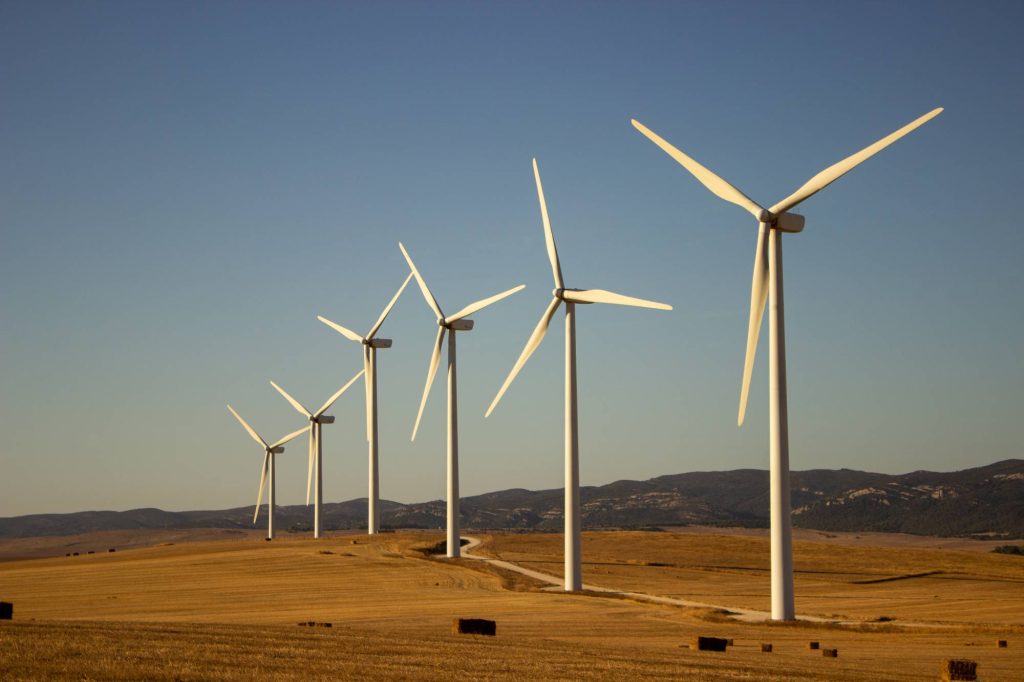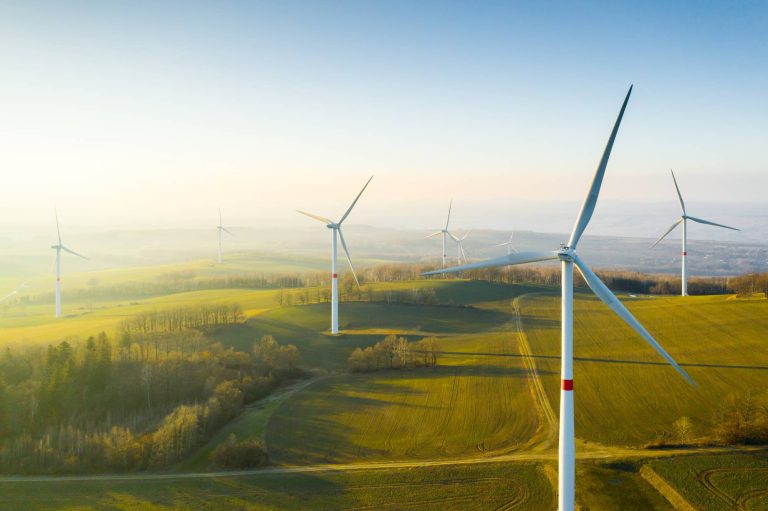We know that Wind Turbines are devices that convert the kinetic energy of the wind into electrical energy. The blades of a wind turbine rotate between 13 and 20 revolutions per minute, depending on its technology, at a constant speed or at variable speed, where the speed of the rotor varies depending on the speed of the wind to achieve greater efficiency.
The Spanish wind farm
Currently, Spain is among the main producers of wind energy in the world. It is the fifth country by installed onshore wind power (28,139 MW) behind China, the United States, Germany and India, as shown by data from Global Wind Energy Council.
There are more than 21,500 wind turbines installed in Spain.
The environmental impact of the wind farm
Although a priori it is minor, renewable energies also have an impact on the environment.
However, unlike other energy sources such as fossil fuels where the environmental impact occurs mainly during the useful life of the plant (greenhouse gas emissions and other pollutants), most of the environmental impact of renewables is It concentrates on two moments: manufacturing and dismantling. And when a renewable installation stops working, it becomes a pile of inert matter that must be reused or, failing that, recycled.
A modern, good quality wind turbine typically has a life expectancy of around 20 years, although this can be up to 25 years or more depending on environmental factors and correct maintenance procedures being followed.
Of all the components of a wind turbine, the most problematic when it comes to recycling are the blades.
Generally speaking, most of the components of a wind turbine are recyclable. Currently around 85-90% of the materials from a wind turbine can be recycled. They are primarily manufactured from just six basic raw materials: steel, cast iron, fiberglass (and similar composite materials), copper, aluminum, and the concrete used in foundations.

While most materials are commonly managed in other sectors, the wind industry's challenge centers on recycling blades. These blades are made of composite materials (mainly fiberglass, carbon fiber and resins), which are especially difficult and expensive to separate for correct recycling.
Recycling of Wind Turbine Blades, destination: Construction
Given this panorama, the alternative that emerges as an increasingly convincing and attractive option is the recycling of shovels to use them as cement reinforcement for construction.
Fiberglass, once molded with resins, such as the epoxy commonly used in the manufacture of masses, forms a flexible, robust and durable material. In this sense, the fibers from discarded blades have better properties than new, clean fiberglass.
In addition to its cement application, other alternatives are currently being studied, one of them is the use of the material as a thermal insulator; however, for the moment, the mixture with cement is the most practical and viable.
As an example of this we can mention the 'Life Refibre' project, funded by the European Union, which has found an innovative solution for disused wind turbine blades, by developing a system that converts the blades into recycled glass fibers to improve roads. .
By adding these fibers to the asphalt, it has been possible to increase the durability of the roads in a 30%, avoiding cracks and water leaks. In addition, an increase in resistance to deformation and resilience has been observed, reducing the formation and propagation of cracks.
Until now, recycling wind turbine blades has been a challenge due to the composite materials used, but this type of project offers an effective solution.
On the other hand, and as a mechanism to reduce the environmental impact derived from wind energy, one of the largest wind turbine manufacturers in the world has already begun to incorporate a system of recyclable blades, meanwhile a group of companies in the Iberian region proposes to build an industrial-scale recycling plant for wind turbine blades in the Spanish municipality of Cortes, allowing the possibility of generating new jobs and positioning Spain as a pioneer in technological innovation for wind energy projects in Europe.
It is important to highlight that these measures are of vital importance, since thousands of wind turbines are expected to be dismantled in Europe in the coming years. For this reason, a region-wide call has been launched to completely eliminate discarded wind turbine blades by 2025.
These initiatives are essential to face this challenge and guarantee adequate management of waste generated by the wind industry, thus promoting sustainable and environmentally responsible practices.
Delve into energy efficiency and specialize in the latest technologies, policies and methodologies associated with renewable energies, specializing with our Master in Efficient Energy Management Renewable.



































